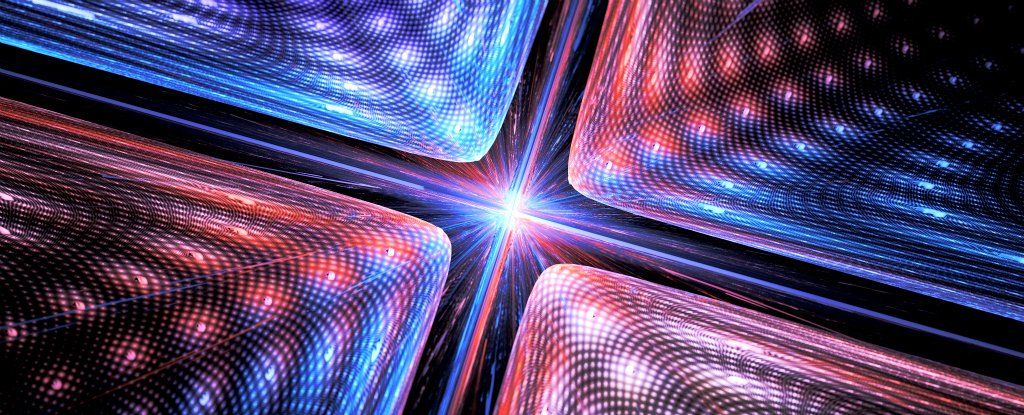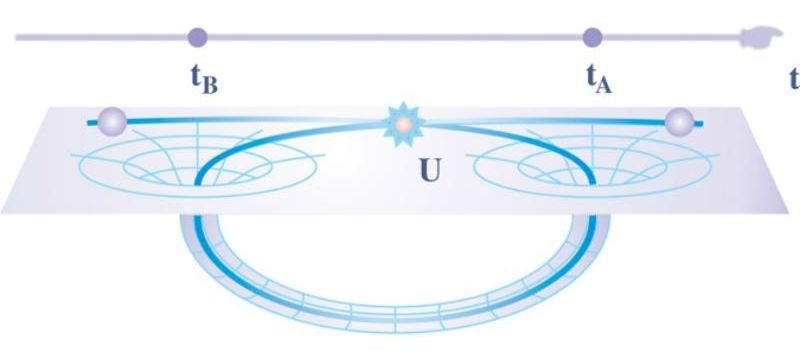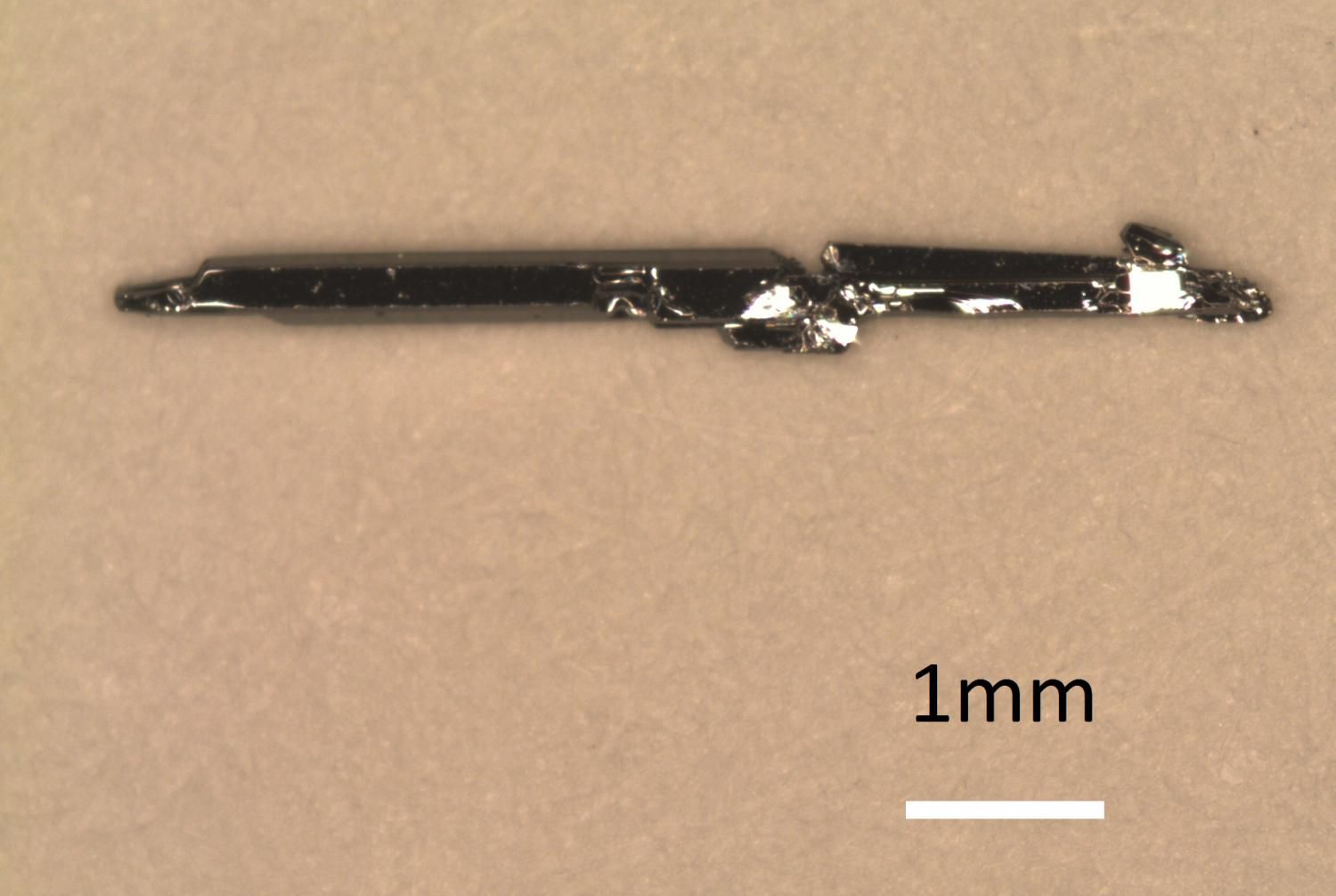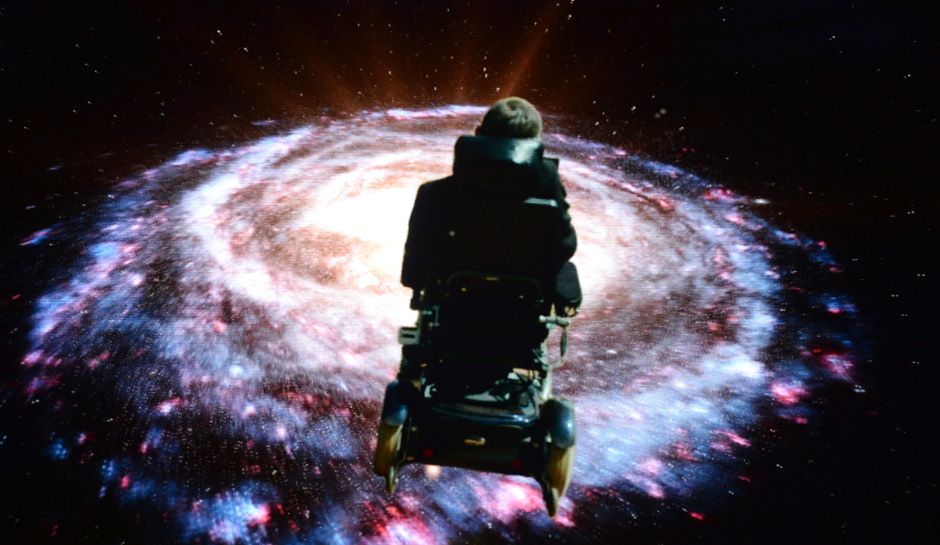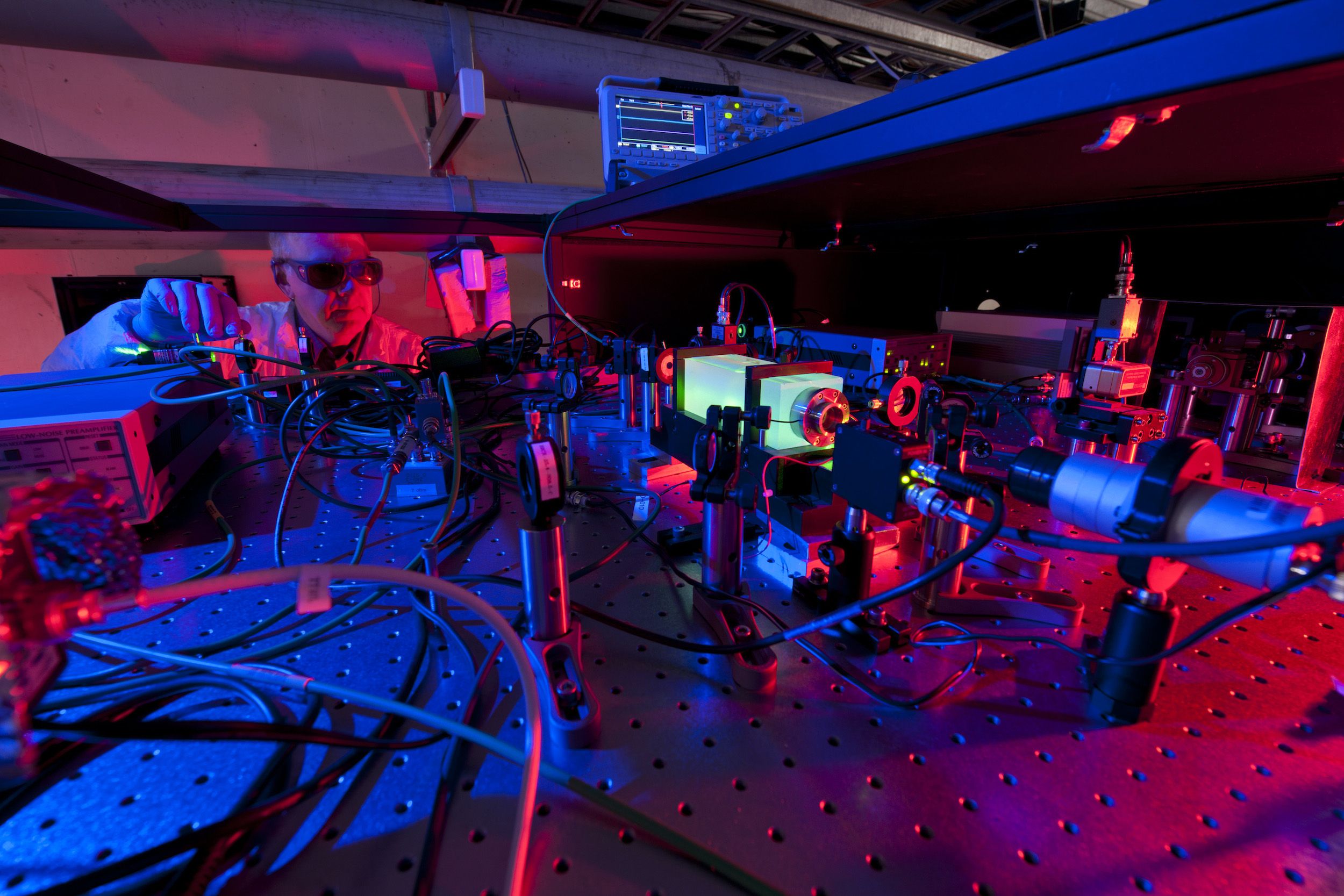Archive for the ‘quantum physics’ category: Page 840
Nov 28, 2015
Scientists have discovered a material that could create quantum optical computers
Posted by Shailesh Prasad in categories: computing, materials, particle physics, quantum physics
When people talk about the next-generation of computers, they’re usually referring to one of two things: quantum computers – devices that will have exponentially greater processing power thanks to the addition of quantum superposition to the binary code – and optical computers, which will beam data at the speed of light without generating all the heat and wasted energy of traditional electronic computers.
Both of those have the power to revolutionise computing as we know it, and now scientists at the University of Technology, Sydney have discovered a material that has the potential to combine both of those abilities in one ridiculously powerful computer of the future. Just hold on for a second while we freak out over here.
The material is layered hexagonal boron nitride, which is a bit of a mouthful, but all you really need to know about it is that it’s only one atom thick – just like graphene – and it has the ability to emit a single pulse of quantum light on demand at room temperature, making it ideal to help build a quantum optical computer chip.
Nov 27, 2015
Microsoft Stock Analysis
Posted by Shailesh Prasad in categories: business, quantum physics, supercomputing
It seems evident that Microsoft is joining other top tech companies in betting on quantum computing with a clear business strategy in mind: to become the market leader in software development platforms for quantum computing. If quantum computers become the next supercomputing revolution in 2025, Microsoft stock will take a quantum leap.
Nov 27, 2015
Quantum computers: a time-travelling boost
Posted by Andreas Matt in categories: computing, quantum physics, time travel
In general relativity, closed timelike curves can break causality with remarkable and unsettling consequences. At the classical level, they induce causal paradoxes disturbing enough to motivate conjectures that explicitly prevent their existence. At the quantum level such problems can be resolved through the Deutschian formalism, however this induces radical benefits—from cloning unknown quantum states to solving problems intractable to quantum computers. Instinctively, one expects these benefits to vanish if causality is respected. Here we show that in harnessing entanglement, we can efficiently solve NP-complete problems and clone arbitrary quantum states—even when all time-travelling systems are completely isolated from the past. Thus, the many defining benefits of Deutschian closed timelike curves can still be harnessed, even when causality is preserved. Our results unveil a subtle interplay between entanglement and general relativity, and significantly improve the potential of probing the radical effects that may exist at the interface between relativity and quantum theory.
Nov 25, 2015
‘Material universe’ yields surprising new particle
Posted by Andreas Matt in categories: computing, materials, particle physics, quantum physics
An international team of researchers has predicted the existence of a new type of particle called the type-II Weyl fermion in metallic materials. When subjected to a magnetic field, the materials containing the particle act as insulators for current applied in some directions and as conductors for current applied in other directions. This behavior suggests a range of potential applications, from low-energy devices to efficient transistors.
The researchers theorize that the particle exists in a material known as tungsten ditelluride (WTe2), which the researchers liken to a “material universe” because it contains several particles, some of which exist under normal conditions in our universe and others that may exist only in these specialized types of crystals. The research appeared in the journal Nature this week.
The new particle is a cousin of the Weyl fermion, one of the particles in standard quantum field theory. However, the type-II particle exhibits very different responses to electromagnetic fields, being a near perfect conductor in some directions of the field and an insulator in others.
Nov 25, 2015
Physicists set quantum record
Posted by Shailesh Prasad in categories: particle physics, quantum physics
Researchers from Stanford have advanced a long-standing problem in quantum physics – how to send “entangled” particles over long distances.
Their work is described in the online edition of Nature Communications.
Scientists and engineers are interested in the practical application of this technology to make quantum networks that can send highly secure information over long distances – a capability that also makes the technology appealing to governments, banks and militaries.
Nov 25, 2015
Stephen Hawking’s Legacy Could Be ‘Holy Grail’ Of Physics: Combining Gravity And Quantum Mechanics At Black Hole Horizons
Posted by Andreas Matt in categories: cosmology, neuroscience, nuclear energy, particle physics, quantum physics, sustainability
Interesting…
To suggest that quantum mechanics and gravity are on the verge of being reconciled would be, to the physics world at least, as significant as the discover of splitting the atom. While splitting the atom might have led to the nuclear bomb, it also led to the technology of nuclear power, i.e. nuclear fission, which, if harnessed properly, creates a renewable and sustainable energy resource. The problem has always been that quantum mechanics — the rules that govern sub-atomic particles — and gravity, the rule that governs mass as we know it (the stuff we can touch and feel), do not agree with each other. The question has always been, what is it that “unifies” these two theories? Is quantum mechanics God playing dice, as Einstein suggested?
“God doesn’t play dice with the universe.”
Nov 21, 2015
Spooky Action Is Real: Bizarre Quantum Entanglement Confirmed in New Tests
Posted by Sean Brazell in categories: particle physics, quantum physics
It just goes to show that one of the most potent weapons in science is the ability to keep an open, critical mind.
Two recent studies have confirmed that the “spooky action at a distance” that so upset Albert Einstein — the notion that two entangled particles separated by long distances can instantly affect each other — has been proven to work in a stunning array of different experimental setups.
One experiment closed two of the three loopholes in proofs of spooky action at a distance. Another found that quantum entanglement works over astonishingly large distances. And future tests are focused on making the final loophole as small as possible. [8 Ways You Can See Einstein’s Theory of Relativity in Real Life]
Continue reading “Spooky Action Is Real: Bizarre Quantum Entanglement Confirmed in New Tests” »
Nov 20, 2015
There Is Growing Evidence that Our Universe Is a Giant Hologram
Posted by Andreas Matt in categories: computing, cosmology, information science, quantum physics
Old post,but interesting…
If the holographic principle does indeed describe our universe, it could help resolve many inconsistencies between relativistic physics and quantum physics, including the black hole information paradox. It would also offer researchers a way to solve some very tough quantum problems using relatively simple gravitational equations. But before we can be sure that we’re living in the Matrix, there’s still a lot of work to be done.
“We did this calculation using 3D gravitational theory and 2D quantum field theory, but the universe actually has three spatial dimensions plus time,” Grumiller said. “A next step is to generalize these considerations to include one higher dimension. There are also many other quantities that should correspond between gravitational theory and quantum field theory, and examining these correspondences is ongoing work.”
Continue reading “There Is Growing Evidence that Our Universe Is a Giant Hologram” »
Nov 20, 2015
Quantum entanglement achieved at room temperature in semiconductor wafers
Posted by Sean Cusack in categories: computing, electronics, particle physics, quantum physics
Entanglement is one of the strangest phenomena predicted by quantum mechanics, the theory that underlies most of modern physics. It says that two particles can be so inextricably connected that the state of one particle can instantly influence the state of the other, no matter how far apart they are.
Just one century ago, entanglement was at the center of intense theoretical debate, leaving scientists like Albert Einstein baffled. Today, however, entanglement is accepted as a fact of nature and is actively being explored as a resource for future technologies including quantum computers, quantum communication networks, and high-precision quantum sensors.
Entanglement is also one of nature’s most elusive phenomena. Producing entanglement between particles requires that they start out in a highly ordered state, which is disfavored by thermodynamics, the process that governs the interactions between heat and other forms of energy. This poses a particularly formidable challenge when trying to realize entanglement at the macroscopic scale, among huge numbers of particles.

